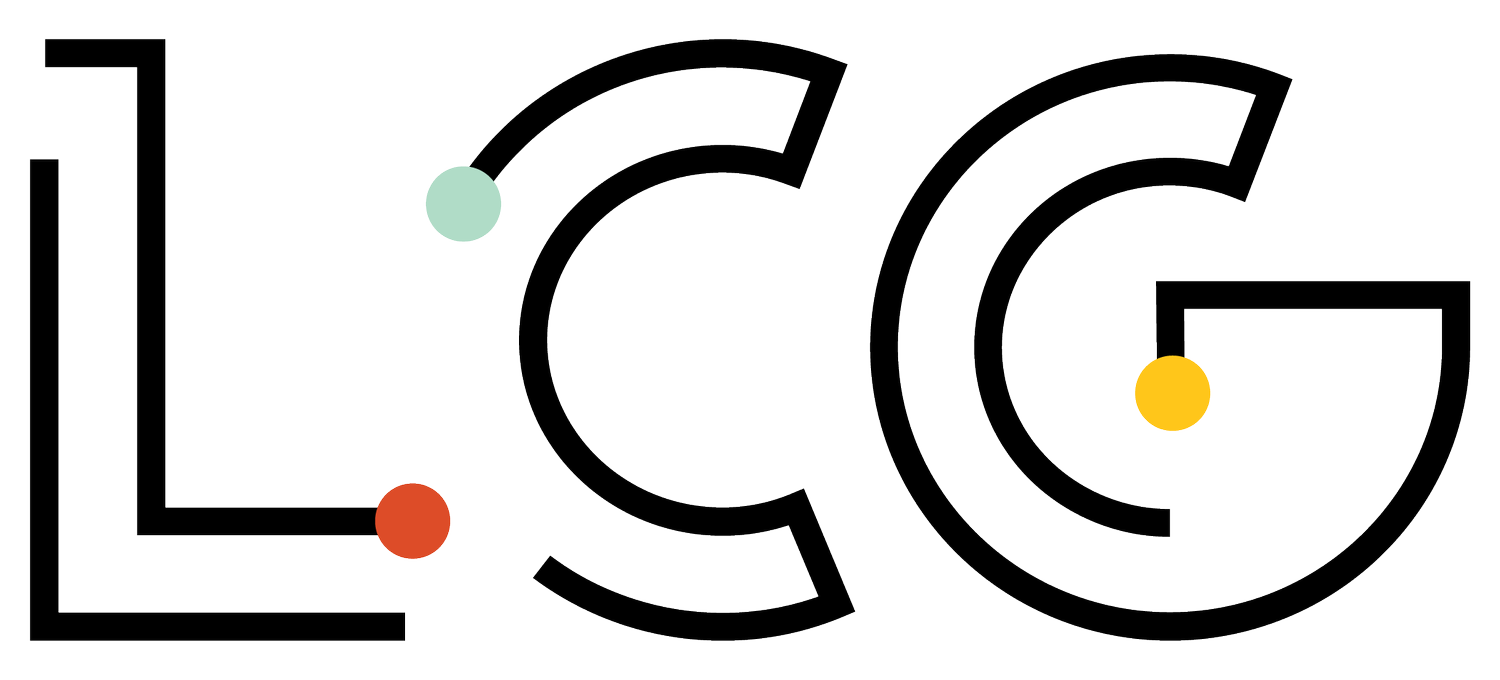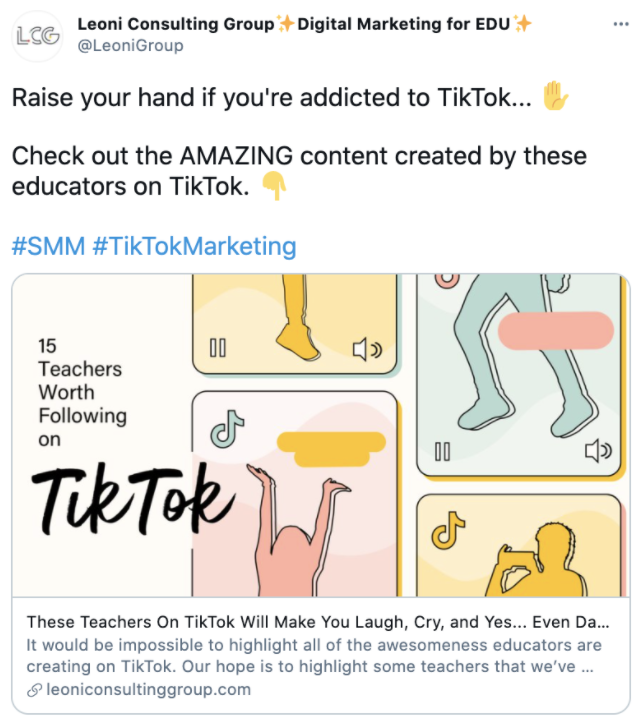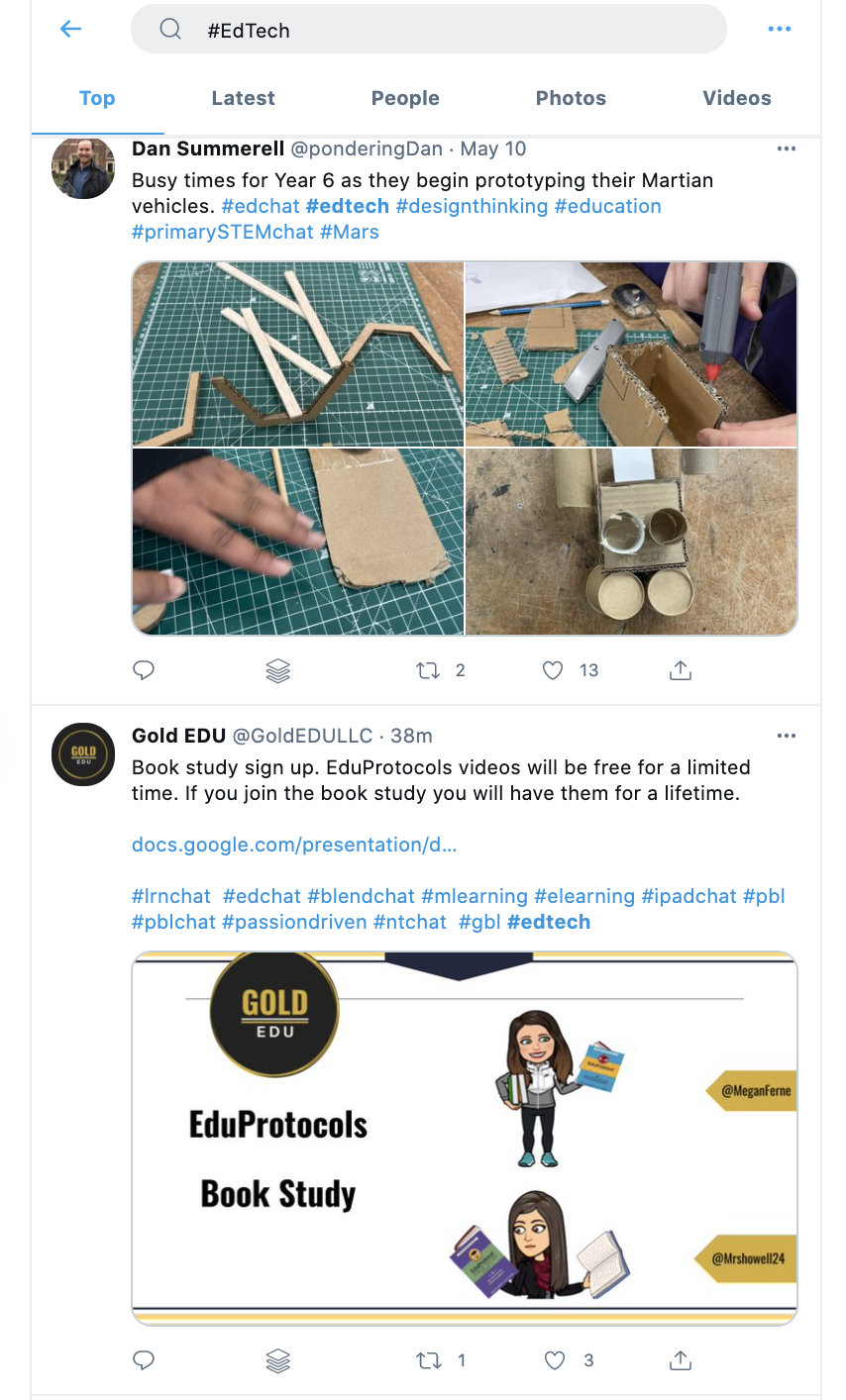Should you be using hashtags in your tweets? Are you using the best hashtags for your brand? Do you know how many to use or where to insert them? Just like everything with social media, hashtag best practices for each social media channel change constantly. To make your life a lot easier, we’ve gathered the most up-to-date research on what is currently working, especially for Twitter, and throughout this blog series, we’ll give you everything you need to create your own hashtag strategy that fits your unique goals of your brand. Although this series will be centered on Twitter, if we get requests to do other social media channels, we definitely will!
Before we get into some specifics, we’ll start with the basics of hashtags on Twitter and a quick note about hashtags on social media overall.
Hashtags on Different Social Media Channels
Most social media channels use hashtags to categorize content. But they work slightly differently (and more/less well) on different platforms. On Twitter and Instagram, for example, hashtags are essential. They help your content get discovered and there are many hashtags for you to experiment with. Hashtags are much less popular on Facebook, but some brands are using them effectively and hashtags are expected to make a bigger comeback in 2021. On LinkedIn, hashtags are also gaining popularity and it is becoming more of a norm for people to create their own hashtag (and ask people to follow it) and people generally add 3-5 hashtags per post. What’s cool about hashtags on LinkedIn is that you can follow them, just like you would a person and the posts with that specific hashtag will appear in your feed. Pinterest has been a bit all over the place with hashtags and it drives us Pinterest folks bonkers! Overall, we’d recommend skipping hashtags on Pinterest altogether since they’re cut off in Pin descriptions now and are not clickable.
Hashtags Defined
A hashtag is any word or phrase with the # symbol in front of it (no spaces or punctuation). If you want the official definition according to Wikipedia, a hashtag is a metadata tag that is prefaced by the hash symbol, #.
Hashtags have been around since 2007 and were actually first created for Twitter! They provide Twitter users with an easy way to search for, categorize tweets, and follow folks that tweet about things they care about. Think of them like a way to keyword or tags your posts. On Twitter, many users specifically search for tweets through hashtags. For example, if an educator is looking for tweets that talk about education technology, they might search for #EdTech or #EdTechChat.
Why You Should Use a Hashtag
On Twitter, hashtags are key to increasing your reach and engagement, especially if you are starting out and have a small number of followers. This is because hashtags allow users who aren’t following you to see your tweets! According to 2021 data, tweets with at least one hashtag receive 12.6% more engagement than those without them. Also, if your brand engages and programs relevant Twitter hashtags, it can be an effective way to provide consistent value and eventually create relationships with your target audience. This is why you want to be sure that you’re not only using hashtags, but that you’re using the right hashtags.
How Many Hashtags You Should Use
This can vary by specific industry, the content of the tweet, and the overall real-time landscape of current events. No surprise that the research is inconclusive on the exact amount of hashtags that are ideal to include. One study showed that 4 hashtags per tweet can increase the overall reach of tweets and another showed 1-2 hashtags were ideal. Regardless of the specifics, overall the research emphasizes that everyone should use at least 1-2 relevant hashtags (and no more than 4 if the hashtags are directly related to your content).
Where You Should Put Your Hashtags
When you use hashtags on Twitter, you can include them in the text of your post or after your post. For accessibility, it’s better to add the hashtags at the end of the main text of your post. If you do use hashtags within the text of your post, use them sparingly. Don’t just randomly hashtag words— do research into the most relevant hashtags. And remember, hashtags break when you add spaces or use punctuation.
✅ Good use of hashtags:
We’re so excited to celebrate #TeacherAppreciationWeek by sharing a gift guide for teachers. #TeacherAppreciation
❌ Bad use of hashtags:
We’re so excited to #Celebrate #TeacherAppreciatonWeek by sharing a #GiftGuide for #Teachers!
When the link is entered at the end of a post, the actual URL is taken away in the body of the tweet.
Also, if you are creating a link tweet, make sure your hashtags are before the link. This allows Twitter or your Twitter scheduling tool (we use Sprout Social and Buffer) to just preview the link and take away the actual URL in the tweet.
How to Make Your Hashtags Accessible
You want to ensure that everyone—including those who are visually impaired— can access and read your tweets. One way to do this is by typing all of your hashtags in CamelCase, which means capitalizing the first letter of every new word in a hashtag (for example, #TeacherAppreciationWeek instead of #teacherappreciationweek). There are many more ways to make your social media posts more accessible overall. Check out these five ways to make your social media more accessible.
What Hashtags You Should Use
This is a complicated answer that deserves a complicated question. Would you rather reach bigger, less targeted audiences or smaller, directly related target audiences? Or maybe it’s a combination of both?
Here are some tips and resources to get started finding the right hashtags for your brand (and a follow-up post will also provide you with a glossary of hashtags to choose from):
1. Find hashtags that are relevant to your brand. There are so many ways you can do this. We’ve outlined a few ways you can get started but know that finding the right hashtags for your brand will take a little bit of detective work, creativity, patience, and agility (as hashtag usage changes all of the time).
Google It
Don’t reinvent the wheel. Many times media or influencers in your industry have already written about the best hashtags to use. You can Google “hashtags related to education” or ”The best hashtags for education.” You can also get even more specific, such as “Hashtags for District Administrators.” For K-12 education, here are the best hashtag websites and resources we rely on:
Education Chat Calendar - Google Site with integration into Google Calendar (updated frequently).
Cybraryman’s Education Hashtag Guide - Although it's not being updated and is slightly out of date, it’s helpful for a quick search and includes hashtags and chats.
Competitors and Influencers
Another easy way to find relevant hashtags is to see what hashtags your direct competitors and influencers are using. You can also lookup a specific hashtag on Twitter and see what other hashtags are being used alongside your targeted hashtags.
Use Tools
There are many free and paid tools that can also help you discover hashtags. We’ll provide a post in this series all about the awesome tools that can make your life a lot easier.
2. Ensure your hashtags aren’t outdated or inappropriate.
The danger of using more broad hashtags like “#Happiness” or “#School” is that these hashtags may be used inappropriately. #School may just be used for students that want to complain about school. #Happiness may include a variety of tweets all over the spectrum of appropriateness. Just do us a favor and always look up how the hashtag is being used before you add it to your tweets and remember, it’s important for you to think about if your target audience would actually be using and searching for those hashtags.
If you’ve been managing social media for a long time, you can likely remember a time when you thought a hashtag you used was solely related to an education topic, but it turned out to be used for something else entirely. For example, #PBL for a while was for those that liked to talk about the Phillipino Basketball League and not project-based learning. Although now the usage of this hashtag does include project-based learning, it’s still mixed and a better hashtag to reach educators that care about PBL is #PBLChat.
3. Determine the overall reach of your hashtag. Ritetag is a great free tool for this. Search the hashtag you want to use and see how many impressions it generally gets. If it doesn’t get any views, it’s not worth using. If it gets millions, your tweets will probably be lost in a sea of tweets that aren’t directly related to what your brand cares about most. For example, if you want to share a fun fact about incorporating music into your teaching, you can use the hashtag #Music. The problem is that #Music gets about 8 million views per hour. Tweets about all kinds of music are constantly flooding the hashtag, and your tweet most likely won’t be getting any attention and if your product is about music in education, people using and searching for #Music, really won’t care about your tweet. A better hashtag in this situation would be #MusicEdu or #MusicEducation.
Getting excited to up your Twitter game with an effective hashtag strategy? In the next few weeks, we’ll provide you with glossaries of the very best hashtags for education to help you increase your reach and engagement, the tools you can use to constantly update and look up your hashtags, and even provide you with a strategy template. While you wait, why not brush up on the Twitter metrics that you should be tracking?
Author note: This post was created in collaboration with Ariella Hayden, LCG’s Spring 2021 Intern.






